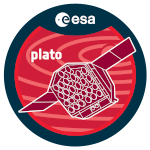Transit light curves are affected by host star darkening towards the limb, impacting transit profile and depth. Thus, accurate determination of planetary radii and atmospheric composition requires solving the problem of limb darkening for stars with different parameters. However, there is a conundrum: multiple observations show significantly brighter stellar limbs as compared to all available stellar models.
We propose that neglecting surface stellar magnetic fields is the main issue in models of the limb darkening. Magnetic fields form within stars and emerge on their surface. Here, we focus on small-scale concentrations of surface magnetic field that create a rather uniform network on stellar surface. We simulated it using 3D radiative magnetohydrodynamics (MHD) code MURaM and radiative transfer code MPS-ATLAS. We found that including this network in our simulations allows reproducing stellar limb darkening deduced from the observations of Kepler and TESS transits, thus reconciling models and observations.
The dependence of limb darkening on stellar surface magnetic field offers a fascinating prospect for measuring magnetization of stars with transiting planets. This method is especially promising since it is sensitive to small-scale fields, which in the exemplary case of the Sun play a crucial role in the total magnetic flux, and, thus, are important for comprehending stellar dynamo and star-planet interaction. All in all, the limb darkening approach presents an intriguing possibility to measure stellar magnetic fields using the upcoming PLATO mission, which is projected to discover numerous transiting planets.

 PDF version
PDF version
